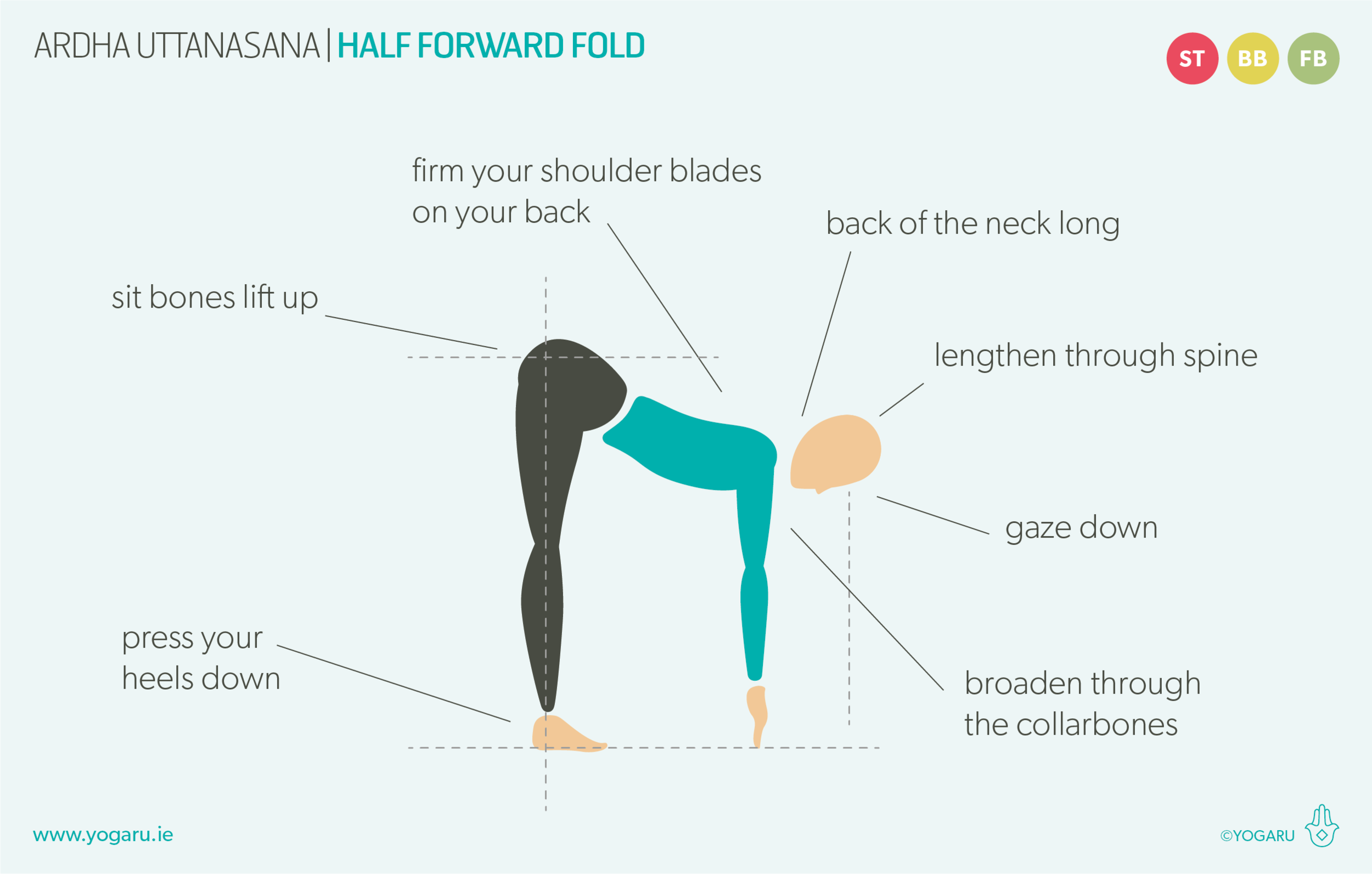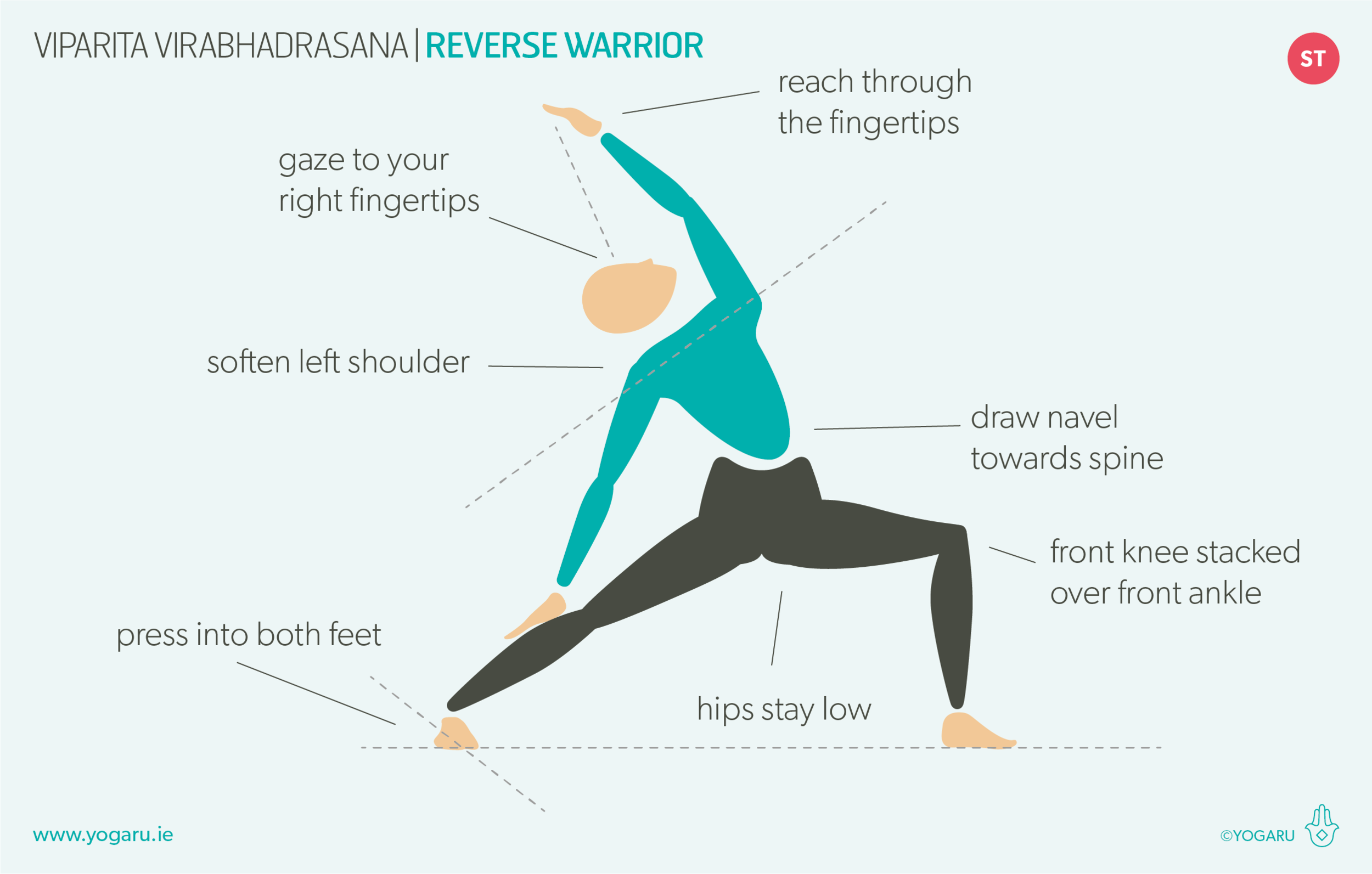FORWARD BEND & BACKBEND
Ardha Uttanasana/Half Forward Fold is a standing pose which is both a forward blend and a backbend which can seem contradictory. It rotates the hips forward into a ‘forward bend’ and extends the spine back into a ‘backbend’. You will also spot this slightly unusual double bend quality in Bitilasana/Cow where the hips rotate down and forward as your spine curls back towards the back of the hips. Ardha Uttanasana/Half Forward Fold is very strengthening for the spine – the whole back is working against gravity to lift the weight of the upper body and the heavy head. The back is prone to become weakened through our habitual posture, and how we move throughout our day without awareness of the curves of our spine. The muscles of the spine are designed to hold us up against gravity and protect the important structure of the vertebrae, which houses the peripheral nervous systems spinal cord. Ardha Uttanasana/Half Forward Fold is a very beneficial pose to add into any sequence to help counteract long periods of sitting or standing and improve everyday posture by strengthening the back.
The spine moves in a symbiosis with the hip joint. In an upright position, when you tilt the pelvis forward the lower spine reacts by increasing its curve, the mid back reduces its curve and the neck increases its curve. The reverse happens when you tilt your pelvis back – the lower spine reacts by reducing its curve, the mid back increases its curve and the neck reduces its curve. Ardha Uttanasana/Half Forward Fold builds this spine and hip relationship and is a very good pose to observe how one affects the other. A strong back, and good communication between the spine and the hip joint, facilitate freer, fluid movement throughout your day.
THE BENEFITS OF ARDHA UTTANASANA/HALF FORWARD FOLD
Ardha Uttanasana/Half Forward Fold stretches the hamstrings, glutes and chest; and strengthens the hip flexors and spine. Although not as dramatic an inversion or a forward as Uttanasana/Forward Fold, it still increases circulation, boosts the immune system, eases fatigue, stress, tension and anxiety. It is a more accessible forward fold for those with tight hamstrings or hips. The main quality I use Ardha Uttanasana/Half Forward Fold for in my sequences is to strengthen the back muscles and to gently lengthen out the hamstrings and glutes., while also helping you build good habits not to curl the shoulders forward when you are sitting and standing.
EXPLORING ARDHA UTTANASANA/HALF FORWARD FOLD IN YOUR PRACTICE
This sequence will gently warm up your hamstrings and spine to prepare for your peak pose – Ardha Uttanasana/Half Forward Fold. You will have lots of opportunities to explore the pose throughout the sequence. Mix it up by holding the pose for 3 full breaths and working your way through all the alignment cues and in other rounds staying for just the breath indicated in the sequence with a ‘+’ for an inhale and a ‘-’ for an exhale. Whether you are pausing for a few breaths or moving in a flow, be sure to press your hands into your legs, reach your chest forward and up and roll your shoulders back towards the back of your hips. Feel a stretch in the chest and strength in the upper back. If you hit resistance in your hamstrings, keep your knees slightly bent. Take care not to bring too much extension into the back of the neck.
ALIGNMENT CUES
Take your time in your Ardha Uttanasana/Half Forward Fold in the sequence to give the strong muscle at the back of your hips and legs a chance to gently lengthen and for your upper back to strengthen.
Have a read of the tips below and either print out the sequence or save it onto your device:
From Uttanasana, inhale, lift up halfway, fingertips just below your knees or to the ground.
Lengthen through your spine to the tip of your crown, extend your sternum forward and up, back of the neck long.
Broaden through the collarbones, firm your shoulder blades onto your back, lift with the whole back.
Press into your heels to firm your legs, gaze down.
To save the images for personal use click and hold down the image until the ‘save image’ option appears; on Mac hold down ‘control’ and click the image to get the option box; on PC right click on the image to get the option box. Scroll down in the ‘option box’ and click ‘save image’.
Ruth Delahunty Yogaru







